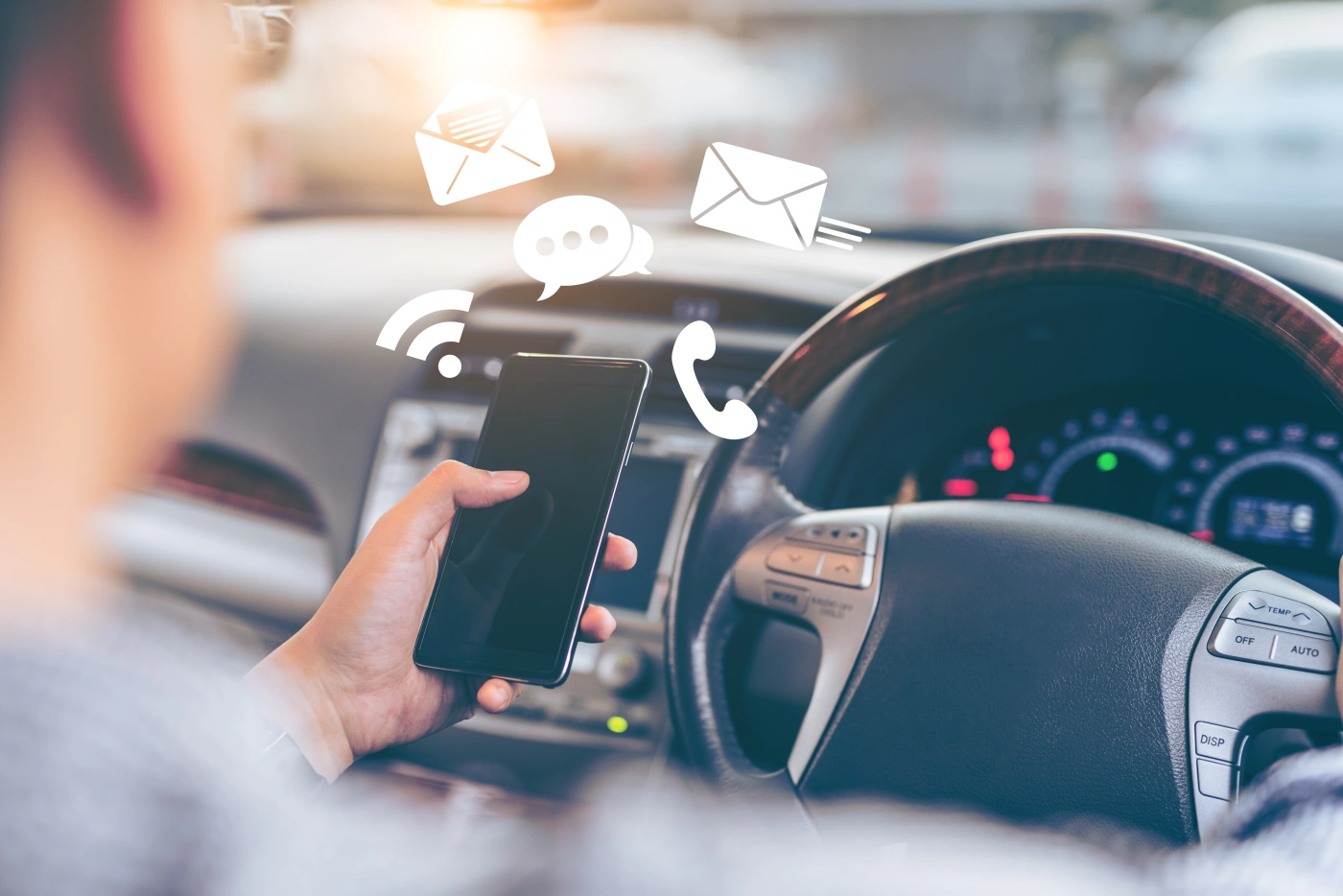If you're curious about the latest distracted driving statistics, here's a snapshot: driving while distracted remains a major road risk with common culprits like phones and eating. Accidents due to distractions have a high percentage, and even a split second of inattention can turn hazardous fast, leading to injuries, property damage, or worse. Distractions can make drivers up to 23 times more likely to crash, affecting reaction times and lane stability. Understanding the impact of distracted driving, especially among young drivers, can shed light on prevention strategies and technology's role in exacerbating risks on the road.
Current State of Distracted Driving
If you're driving while distracted, you're putting yourself and others at risk on the road. Distracted driving has become a prevalent issue in today's society, with the use of mobile phones, eating, and adjusting GPS systems being common culprits. According to recent statistics, a significant percentage of accidents are caused by distracted driving. It only takes a split second of looking away from the road for a dangerous situation to unfold.
Being distracted behind the wheel not only endangers your safety but also jeopardizes the well-being of pedestrians, cyclists, and other drivers sharing the road with you. The consequences of distracted driving can be severe, leading to injuries, property damage, and even fatalities. It's important to prioritize your attention while driving to guarantee a safe journey for everyone on the road.
Impact on Traffic Accidents
Distracted driving greatly contributes to the occurrence of traffic accidents. When you engage in distractions behind the wheel, the risk of being involved in a collision significantly rises. Here's how distracted driving impacts traffic accidents:
- Increased Collision Risk: Drivers who text, eat, or engage in other distractions are up to 23 times more likely to crash.
- Reduced Reaction Time: Checking your phone or adjusting the radio diverts your attention, leading to slower response times in critical situations.
- Lane Departures: Distracted drivers are prone to drifting out of their lane, increasing the likelihood of sideswiping or hitting another vehicle.
Demographics and Distracted Driving
Understanding the demographics of distracted driving sheds light on the prevalence of this dangerous behavior among different age groups and genders. Young drivers, particularly those in their teens and early twenties, are more likely to engage in distracted driving compared to older age groups. Studies show that this demographic is often more prone to using their smartphones while behind the wheel, whether it's texting, browsing social media, or taking selfies.
Interestingly, gender also plays a role in distracted driving habits. Research indicates that male drivers tend to be more susceptible to distractions related to external factors, such as looking at roadside incidents or being engaged in aggressive driving behaviors. On the other hand, female drivers are more inclined to be distracted by internal factors, like adjusting the radio or tending to children in the back seat.
Technologys Role in Distracted Driving
Technology greatly contributes to the issue of distracted driving, intensifying the risks on the roads today. With the increasing prevalence of smartphones and in-car infotainment systems, drivers face more temptations that take their attention away from the road. Here are three ways in which technology plays a role in distracted driving:
- Smartphone Use: The urge to check notifications, send texts, or scroll through social media while driving has become a major problem. The constant connectivity provided by smartphones makes it challenging for drivers to resist the temptation to use their devices behind the wheel.
- In-Car Infotainment Systems: Modern vehicles come equipped with advanced infotainment systems that offer various features like music streaming, navigation, and hands-free calling. While these technologies aim to enhance the driving experience, they also pose a distraction risk when drivers interact with them while driving.
- Voice Assistants: Voice-activated assistants like Siri and Google Assistant offer convenience by allowing drivers to perform tasks hands-free. However, engaging with voice assistants can still divert a driver's attention and lead to accidents on the road.
Strategies for Prevention
To decrease the risks of distracted driving, prioritize establishing clear rules and boundaries for yourself while behind the wheel. Start by setting your phone to silent or using apps that block notifications while driving. Make it a habit to stow your phone in a place that's out of reach and out of sight to resist the temptation of checking it. Plan your route ahead of time and utilize voice-guided navigation systems to avoid looking at maps while driving. If you need to make a call or send a message, pull over to a safe location instead of doing it on the go. Additionally, if you're feeling tired or emotional, take a break before getting behind the wheel. Remember that your safety and the safety of others on the road depend on your undivided attention. By implementing these strategies and staying disciplined, you can significantly lessen the likelihood of accidents caused by distracted driving.
Frequently Asked Questions
How Do Distracted Driving Statistics Vary Between Urban and Rural Areas?
When driving, distractions pose risks regardless of location. In urban areas, higher traffic density may lead to more distractions like billboards. Rural roads offer fewer distractions but require vigilance for wildlife and winding paths.
Are There Any Specific Occupations or Industries That Have Higher Rates of Distracted Driving Incidents?
In certain occupations or industries, distracted driving incidents are more prevalent. High-pressure jobs like delivery drivers, healthcare professionals, and sales representatives often face distractions on the road. Stay vigilant to guarantee safety.
Do Distracted Driving Statistics Differ Between Day and Night Time?
During the day, distracted driving incidents are more common due to increased traffic and busy schedules. At night, distractions can be different, like fatigue or reduced visibility. Stay vigilant regardless of the time to stay safe.
Are There Any Regional Differences in Distracted Driving Trends Across the Country?
Across the country, regional differences impact distracted driving trends. Stay alert and adapt your driving habits to local patterns. Awareness and vigilance can help you navigate safely, no matter where you are driving.
How Do Distractions From Passengers Compare to Distractions From Electronic Devices in Contributing to Accidents?
When driving, friends can be just as distracting as phones. Passengers chatting or kids playing can divert your focus from the road. Stay alert, prioritize safety. Limit distractions for a safer journey.
Conclusion
So, remember to stay focused while driving to keep yourself and others safe on the road. Distracted driving continues to be a major issue, leading to an increase in traffic accidents and fatalities. By understanding the current statistics and demographics, as well as the role of technology in distracted driving, you can take steps to prevent these incidents. Stay alert, put down your phone, and always prioritize safety behind the wheel. Drive safe!



